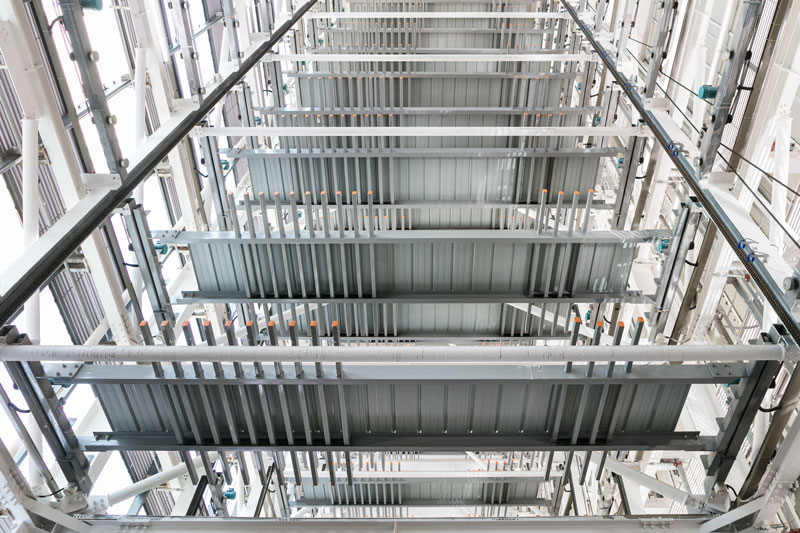At the entrance of the underground garage of a shopping mall in Lujiazui, Shanghai, a black sedan slowly drove into the circular lifting platform. In less than 90 seconds, the robotic arm had steadily lifted the vehicle to the vacant parking space on the 15th floor; At the same time, another elevator carrying the car owner is descending at a constant speed from the 12th floor – this is not a scene from a science fiction movie, but a daily “vertical lift parking device” that is becoming increasingly common in Chinese cities.

This device, commonly known as an “elevator style parking tower,” is becoming the key to solving the city’s “parking dilemma” with its disruptive design of “asking for space from the sky. Data shows that the number of cars in China has exceeded 400 million, but there is a shortage of over 130 million urban parking spaces. While traditional flat parking lots are difficult to find, land resources are becoming increasingly scarce. The emergence of vertical lifting equipment has shifted the parking space from “flat layout” to “vertical stacking”. A single set of equipment covers an area of only 30-50 square meters, but can provide 80-200 parking spaces. The land utilization rate is 5-10 times higher than traditional parking lots, which precisely hits the “spatial pain point” in the urban core area.
Technological iteration has further propelled this device from being “usable” to being “easy to use”. Early lifting equipment was often criticized for its complex operation and long waiting time. Nowadays, intelligent control systems have achieved full process unmanned operation: car owners can reserve parking spaces through an APP, and after the vehicle enters the entrance, laser ranging and visual recognition systems automatically complete size detection and safety scanning. The robotic arm completes lifting, translation, and storage with millimeter level accuracy, and the entire process takes no more than 2 minutes; When picking up the car, the system will automatically schedule the nearest available parking space based on real-time traffic flow, and lift the cabin directly to the target level without manual intervention throughout the entire process. Some high-end devices are also connected to the city’s smart parking platform, which can exchange parking data with surrounding shopping malls and office buildings, truly achieving the optimization of parking resources in a “city wide game”.
Vertical lift parking facilities have become landmark supporting facilities in global urban core areas such as Qianhai in Shenzhen, Shibuya in Tokyo, and Marina Bay in Singapore. They are not only tools to solve the “last mile parking problem”, but also reshape the logic of urban space use – when land is no longer a “container” for parking, mechanical intelligence becomes a connecting bridge, and the vertical growth of cities has a warmer footnote. With the deep integration of 5G, AI technology and equipment manufacturing, future vertical lift parking equipment may integrate extended functions such as new energy charging and vehicle maintenance, becoming a comprehensive service node for community life. In the city where every inch of land is precious, this’ upward revolution ‘has just begun.
Post time: Aug-08-2025